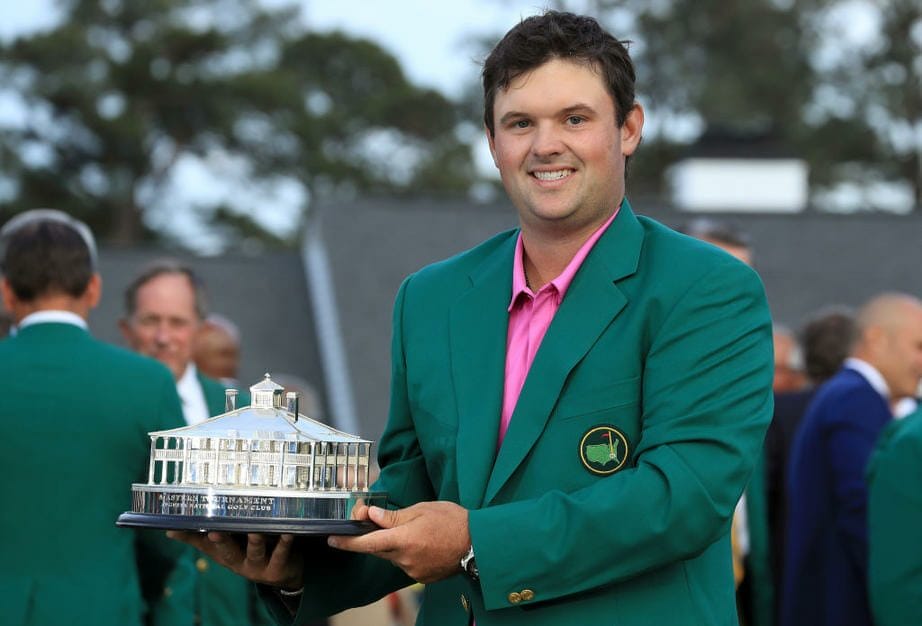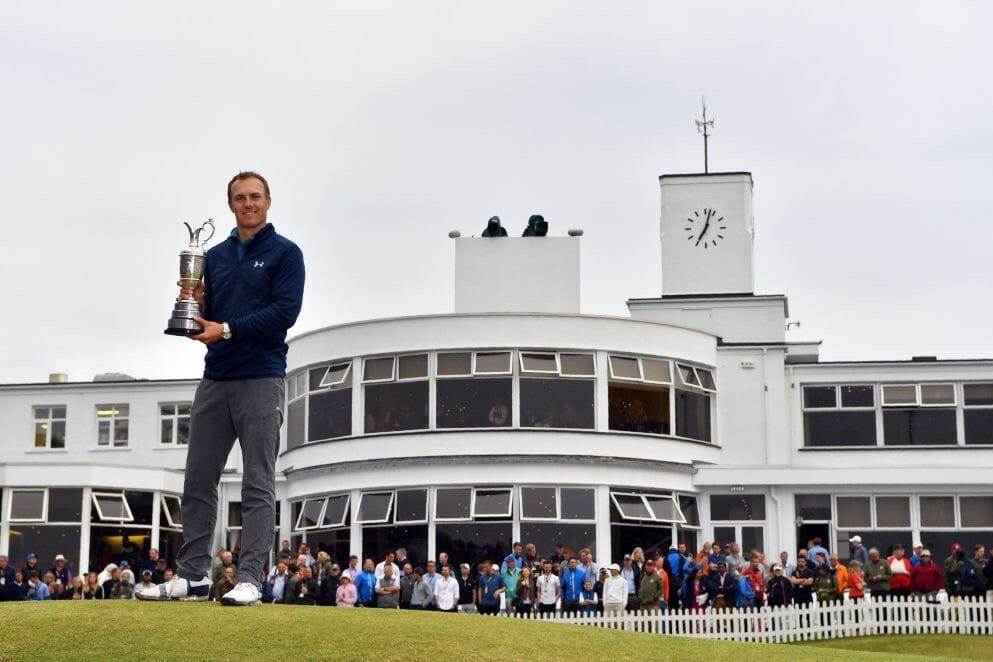“THIS for the Open” – or the US Open, or the Masters, or the USPGA.Who among us has not at some point on a practice green quietly verbalised that thought and imagined the experience of facing up to to a putt that would win a Major championship?
In reality, through 158 years of golf history, starting with the first Open Championship in 1860, only 220 male players have actually lived that putt. Some, of course, have been multiple winners, including the top two in the record list, Jack Nicklaus with 18, and Tiger Woods with 14 professional majors respectively in stellar careers.
Brooks Koepka, one year after his maiden Major victory, enters the ‘multiple’ winners section with the second successive US Open title he claimed at Shinnecock Hills. Others have won ‘just ’ one of the game’s four elite championships, but hey, that’s still a big achievement for any player, in any era.
All of which set me thinking: what separates a Major winner from the rest of his fellow pros in any of golf’s elite championships?
Is it about destiny? Does a new born child arrive with something intangible that marks him out to be a ‘chosen one’?
On a certain date and occasion, like an arrow shot from a bow and hitting the bulls eye, is this golfer fated to be hailed as a major champion?
Alternatively, does chance and luck tilt the scales in favour of a victory in the men’s Masters, US Open, Open Championship, and US PGA Championship on a given week in a given year?
Pádraig Harrington, for instance, would not be a believer in the ‘destiny’ argument. He actually says in the TV series “Chronicles of a Champion Golfer” that he “wasn’t destined to be a major champion.”
By that, if I understand Harrington correctly, he believes that hard word, ambition, and self-confidence can create opportunities for players to break the barrier that separates Major winners from the also-rans.
Whether the golfer can take advantage depends his character and ability to hit the shots that are required in the white heat of a Major Sunday.
There are, however, some clues to success, if we are to judge by the experience of breakthrough champions of 2017 – Sergio Garcia in the Masters; Brooks Koepka in the US Open; Justin Thomas in the US PGA -and Patrick Reed in the 2018 Masters.
To recap, these are the bare statistics of their maiden Major victories:
Garcia: 2017 Masters at Augusta National.
Score: 279 (-3) Beat Justin Rose at first playoff hole.
Koepka: 2017 US Open at Erin Hills, Wisconsin.
Score: 272 (-16). Won by four shots from Tied-2 Hideki Matsuyama and Brian Harman.
Thomas: 2017 US PGA Championship at Quail Hollow.
Score: 276 (-8). Won by two shots from Tied-2 Francesco Molinari, Patrick Reed and Louis Oosthuizen.
Reed: 2018 Masters at Augusta National.
Score: 273 (-15). Won by one shot ahead of Rickie Fowler.
Four different individuals, with varying levels of success and experience in the pro game, but when it came to the crunch, a number of common themes ran through the narrative of their victories. They were:
(1) The mental/emotional factors in the relevant week.
(2) The caddie relationship and the bagman’s contribution, especially in round four.
(3) Key shots and holes that proved pivotal in turning the tide in their favour.
(4) Lucky breaks at crucial moments.
(5) The Other Guy (s)
All of which set me thinking: what separates a Major winner from the rest of his fellow pros in any of golf’s elite championships?
MENTAL/EMOTIONAL COMPOSURE
All five came into their relevant major week feeling good about their game and about themselves, which was particularly significant for Garcia, aged 37, a professional since 1996 who had played 70 majors without a win. Most important, during the week and on the Sunday of their major, they all felt a core sense of inner calm that allowed them deal with the pressures and the struggles of trying to get the job done.
Sergio Garcia: “I don’t want to brag about it or anything. But from the drive this morning here to the course, I felt very calm. I felt comfortable all day.”
Brooks Koepka (Erin Hills): “Just staying one shot at a time. That’s what I kept doing. I felt like I really stayed patient all week. I felt like that has been the thing lately with me, why I haven’t really played that well, I’ve been trying to win so badly. I felt like I’ve underachieved. And the more patient that I can become, the more times I’ll put myself in this situation.”
Justin Thomas: “I just had an unbelievable calmness throughout the week, throughout the day. I had just the most comforting, easygoing feeling. I truly felt like I was going to win.”
Patrick Reed: “I think the biggest thing was, when is it that I’m going to get out of my own way and just enjoy the ride and come play?
“That’s the biggest thing here, is just allow me to play golf and not worry about what’s at stake, not worry about the greens being so fast, so slopey or you can’t do this, you can’t do that, you have to avoid this.
“You know, I just needed to get right mentally coming into this week.”
THE CADDIE
Sergio Garcia: “We’ve been there before, Glen (Murray) and I.
“We’ve won many tournaments together. We’ve had chances of winning majors together. He always makes sure to stay as calm as possible and give me as much confidence as possible.”
Brooks Koepka: “To be honest with you, me and Ricky (Elliott) my caddie, we’re walking down the fairways, I don’t think we talked about golf. It’s one of those things until we get to the ball and he says the yardage. We were talking about vacations we’ve been on coming up 18. We were talking about when we went to Bali last year.”
Justin Thomas: “Jimmy (Johnson) did an unbelievable job of keeping me calm. It felt like it was a great, great team win for us.”
Patrick Reed: “He (Kessler Karain, his brother-in-law) was really good when it came to wind and club selection.”

KEY SHOTS AND KEY HOLES
Sergio Garcia: “The par on 13 obviously was big. And more than anything, to make that putt, because I hit some decent putts earlier in the round and didn’t make them, and started kind of doubting my reads a little bit, but then I made a great putt on 14 for birdie.
“Hit a great shot on 15. Made that eagle putt. Hit a terrible putt on the next, that wasn’t very nice.
“But then 17 and 18, I played them very, very well. You know, under the gun with the pressure and everything, it’s not that easy to do. So that gave me a lot of belief.”
Brooks Koepka: “That par save was massive on 13.
“I felt like the hole was in kind of a little swale where I think I played it just outside the cup. I needed to make that if I was going to win this golf tournament.
“That’s the reason I felt I had so much confidence coming down the stretch. My ball-striking was really good. Anytime you’re striking well, you’re going to give yourself some chances and I just built off that putt on 13.”
Justin Thomas: “I think walking up to the 12th green, there was maybe five of us at 7-under. I had no idea it was that close. And then that chip-in on 13 was probably the most berserk I’ve ever gone on the golf course.
“To have that chip kind of come out perfectly and exactly like I saw, and that was a roar like I’ve never experienced.”
Patrick Reed: “I felt like I played 11 as smart as I possibly could with hitting the drive into the trees.
“Two years ago, I would have tried to hit that slice 4‑iron around the trees and start it on the pond, and try to get it back to the green. But this time around, I was smarter. I was just like, lay up and worst‑case scenario you’re going to make bogey.
“Then to hit a good iron shot on 12, and make that birdie right there to get that one right back, I felt that right there was when the turning point was, because that putt was huge.”
“And then to hit a quality iron shot on 14, those were basically the two points in my round that I thought, you know, this is going to be my week.”
LUCKY BREAKS AT CRUCIAL MOMENTS
Sergio Garcia: After driving his tee shot into trees on the 13th where the ball went into trees Garcia did not panic.
He took a penalty drop, and decided that a par-5 would be very acceptable which he duly achieved. Rose didn’t take advantage of his opponent’s problems, and three-putted for par on the 13th.
“That was obviously big,” said Garcia.
Brooks Koepka: At the 16th he had to get very precise with his approach, particularly with the adrenalin flowing. Get it wrong, and it could have been game over.
Koepka struck the ball nicely and held his breath, because he and his caddie would not see the bottom of the flag. Happily for him, the ball came to rest safely close to the flagstick.
“We just tried to hit a three-quarter 9-iron on 16. Lucky it didn’t go on the back of the green, because that would have been an impossible putt,” he said.
Justin Thomas: Tee shot on 10th hole. He pulled his drive. The ball was heading for the trees.
“Get lucky, just spit it out for me, please,” he cried, and the ball duly bounced off the tree and into the middle of the fairway. “That’s why you ask,” a much relieved Thomas said in jest to his caddie.
Patrick Reed: On the third hole, after going bogey-par on the first two holes, his putt from just off the green at the third was accelerating and could have finished way past the target. But the ball hit the hole, and went in for birdie three which Reed gratefully accepted.
“I played just a little less break, and luckily the hole got in the way because it was going. But, you know, I needed that. I needed a putt like that to go in. To get back to, not only even par for the tournament, but to see a birdie go in was huge for the momentum early on.”
THE ‘OTHER GUYS’
Sergio Garcia v Justin Rose.
The 2017 Masters evolved into a duel between European Ryder Cup team mates Garcia and Rose. The Englishman did very little wrong, but a bogey on 17, and an errant tee shot on the 18th, the first playoff hole, were key to his Masters ambition remaining unfulfilled.
Brooks Koepka v Brian Harman
Harman was the overnight leader going into the fourth round in 2017, and was one ahead of Koepka but was burned off by the eventual champion’s hat-trick of birdies from the 14thto establish a commanding lead.
Justin Thomas v Patrick Reed
Reed, Kevin Kisner, Hideki Matsuyama, Francesco Molinari, Rickie Fowler, and Chris Stroud were all in contention early in the back nine, with Reed the biggest threat in the last couple of holes until he bogeyed the last.
Patrick Reed v Rory McIlroy, Rickie Fowler, and Jordan Spieth.
McIlroy betrayed his anxiety by carving his tee shot well to the right after seeing Reed miss the fairway on the first hole.
He missed chances to put pressure on the American and never got ahead of Reed.
Jordan Spieth had a spectacular 64 but had just a tad too much ground to make up and ran out of holes, and Fowler once again came up just short, leaving Reed as the last man standing and a worthy winner of the Green Jacket.
The recent US Open, the second Major of 2018, elevated Brooks Koepka to a new level.
By becoming the first man since Curtis Strange in 1988-89 to win back-to-back US Opens, the Quiet Man of golf added to the lustre of this great Championship, and became the 81stplayer to win more than a single Major.
Koepka has found the winning formula twice; now he hopes to apply it to win an Open, a US PGA, and/or a Masters.
“A US Open is always going to be a tough test of golf. I enjoy that. That’s fun. The Open Championship, I think, suits very well, and we always seem to play good at the PGA.
“The only one I haven’t figured out is Augusta. Hopefully, figure that one out soon because I’ll be playing there for a while,” he said.
























Leave a comment